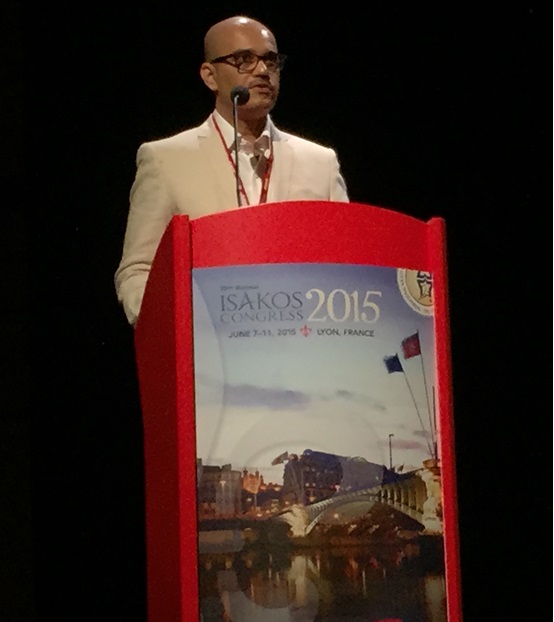PLC Reconstruction Surgery
what is the postero-lateral complex (plc) of knee ?
The knee is held together (stabilized) by ligaments crossing the joint between lower end of femur (thigh bone), upper end of tibia & fibula (leg bones) and the patella.
The complex of multiple ligaments, capsule, muscle-tendon units present along with the bone and joint components on the outer side of knee is called the Postero-Lateral Complex (PLC)
Lateral Collateral Ligament (LCL), Popliteus tendon and the Popliteo-Fibular ligament are amongst three important structures of the PLC.
how does the plc get injured ?
A twisting injury to the knee can result in injury to PLC. This can occur in sports, vehicular accidents, dancing or even due to injuries in our day to day activities.
The PLC is commonly injured in cases of knee dislocations.
If other ligament injuries (ACL/PCL) are neglected over a prolonged period, they can lead to secondary overload injury to the PLC with stretching and dysfunction of the PLC. A bowing in the knee can compliment this and further exaggerate the abnormality.
what are the symptoms of plc injury?
An acute injury to the PLC would lead to swelling and bruising around the knee. The bruising may appear on the outer side or back of the knee. Commonest complain would be pain on the outer side of knee. The pain may also occur on front side in some cases.
A neglect of injury with laxity of the joint would present as abnormal mobility of joint causing instability in some patients. These would complain of an abnormal feeling/loss of confidence in the joint with the knee even buckling (giving way) on pivoting or walking on uneven surfaces.
what are the investigations required for diagnosis ?
Plain X-ray of both knees – AP in standing/Lateral
Scannogram
Stress views of knee
MRI knee
One needs to correlate the patient history along with clinical examination findings and investigations to confirm a precise and complete diagnosis
what are the treatment options ?
All PLC injuries may not require always require a surgical management.
Surgical treatment when necessary, can be in many forms. Some injuries may require repairs (stitching tissues to their original location), some may require reconstructions (making a new structure to substitute the original one).
These procedures may be open, mini-open or all arthroscopic.
In some selective cases a knee realignment may also be required in the form of an ‘upper tibial osteotomy’
what is popliteus sling reconstruction and posterolateral rotatory instability ?
One of the reconstructions required in PLC surgeries is ‘popliteus sling’ reconstruction.
This reconstruction is primarily responsible for management of ‘posterolateral rotatory instability’. This type of knee instability is specific to PLC injuries of the knee.
what is special about dr.kodkani' arthroscopic popliteus sling reconstruction ?
Various open surgical methods have been described for popliteus sling reconstruction.
Dr.Kodkani’ method of ‘Popliteus Sling’ reconstruction is an ‘all arthroscopic’ technique. Since it is an all arthroscopic (completely performed arthroscopically) technique, the procedure is least invasive (so less painful), more precise and allows for better and faster rehabilitation with better results.
This procedure has been published in the American Journal of techniques in knee surgery, presented at the ISAKOS (International Society of Arthroscopy, Knee surgery and Orthopaedic Sports medicine) biannual conference 2015 and followed worldwide.
It is now one of the routine procedures followed by world pioneers, leaders & specialists in management of complex, multi-ligament knee injuries with PLC injuries.
kodkani' arthroscopic popliteus sling reconstruction presented at isakos 2015

why is this procedure of plc reconstruction important ?
Injuries to the postero-lateral complex (PLC) have been very often overlooked , missed or neglected in the past. This mismanagement may not necessarily show deficiency in immediate post-operative results.
Over a prolonged period following ACL/PCL surgery, results start to show deterioration if the PLC injury is neglected or mismanaged. Long term results have shown failure of reconstructions (ACL/PCL reconstructions) or even early development of osteoarthritis if this is not managed correctly. Scientific evidence impresses on the need for a PLC reconstruction/Popliteus Sling reconstruction in these cases which necessitate this procedure.
what is the recovery period following this surgery ?
Recovery and rehabilitation needs to be customized according to the associated procedures performed along with ‘popliteus sling’ reconstruction.
If this is performed as an isolated procedure :
Rigid Long Knee brace – 3 weeks
Hinged knee cap – 6 months
Full weight bearing – 1 week
Full range of knee motion – 6 weeks
Return to sports – 6 months
